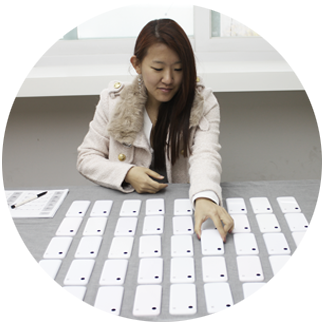Nooree Na, a master candidate published an article entitled as “Investigation of the Emotional Characteristics of White for Designing White Based Product [백색 제품 디자인을 위한 감성적 특성 연구]” in the Journal of Korean Society of Emotion and Sensibility. This study revealed different emotional characteristics of various white nuances, and quantitative solutions were the outcomes. Designers can benefit from the empirical results especially when they need to select appropriate whites colors. This publication boosted her master work.
Abstract
In this study we investigated emotional characteristics of various whites which have slightly different nuances to suggest guidelines that help designers to select appropriate colors when designing white based products. The study involved three different procedures. In experiment 1, we selected 20 emotional words through a survey (N=30) among 60 words, which we picked from literature review that was thought to be appropriate to evaluate product colors. In experiment 2, we evaluated the emotional characteristics of 13 basic colors from the I.R.I Hue & Tone 120 system (N=30) using previously selected emotional words, to find relative emotional positions of white in comparison to other colors. Based on the ratings, factor analysis was conducted and consequently four factors were extracted: flamboyant, elegant, clear, and soft. Accordingly, the emotional characteristics of the 13 colors were profiled and compared with those of white. Finally, in experiment 3, we conducted an evaluation of emotional characteristics on 25 whites with different nuances facilitating the four factors obtained in experiment 2. The color stimuli used in experiments were measured in terms of CIE 1976 L*a*b*, and regression analysis was performed in order to predict the emotional characteristics through the L, a, and b values of a color, as long as that is perceived as a white. Throughout three empirical studies, we observed three overruling tendencies : First, there are four important factors when evaluating product color – flamboyant, elegance, clearness and softness; second, white is dominantly the most elegant in comparison to other colors; third, the emotional factors of the study were affected by some combinations of attributes of colors rather than by all three -hue, saturation and brightness. In addition, the equations derived from the regression analysis in experiment 3, it is expected that designers may predict the emotional distinction between nuances of white.


